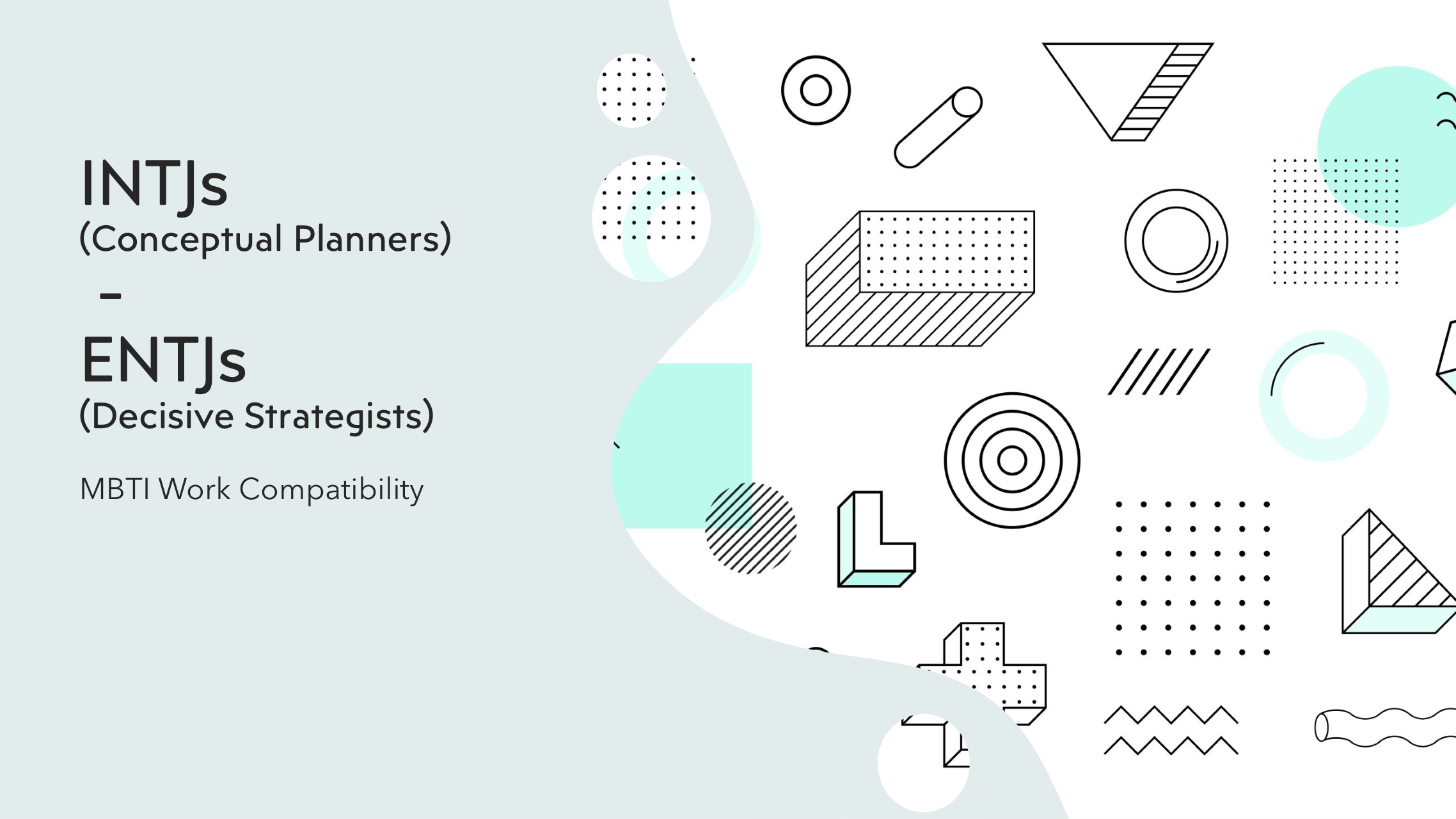
MBTI Work Compatibility - How INTJs and ENTJs can work well together
When INTJ (Introverted, Intuitive, Thinking, Judging) and ENTJ (Extraverted, Intuitive, Thinking, Judging) personalities come together in a professional setting, they create a powerful dynamic. Each brings distinct strengths to the table, and when these are balanced, their collaboration can lead to exceptional results. While both types share the "NT" qualities of being conceptual thinkers and strategic planners, their differences in approach can complement each other, leading to a successful partnership.
Understanding the INTJ (Conceptual Planners)
INTJs, often referred to as the “Architects,” are perfectionist innovators. They excel at taking abstract ideas and turning them into actionable plans. Known for their dual strength in intuitive and practical thinking, INTJs thrive in environments where they can work independently, especially in remote work setups. However, INTJs can sometimes be hasty in making decisions when pressured by deadlines. As a result, they may benefit from colleagues who can help them slow down and critically evaluate their ideas before implementing them. INTJs also prefer to communicate in writing and can shy away from impromptu discussions. They are deeply focused on efficiency and often seek to optimize everything they work on. While they may not always prioritize social interactions, a welcoming and inclusive environment helps them feel comfortable and engaged.
Understanding the ENTJ (Decisive Strategists)
ENTJs, known as the “Commanders,” are strategic, decisive, and goal-oriented individuals who thrive on breaking boundaries and motivating others toward a common objective. They are natural leaders who enjoy making big-picture decisions. However, in their enthusiasm for pushing through solutions, ENTJs may overlook critical details, especially in remote work environments where face-to-face collaboration is limited. ENTJs are charismatic but can come off as blunt. They prefer to lead and take charge in professional settings, making it essential to give them space to make decisions. Socially, they tend to have a strong presence and may dominate conversations, which can sometimes overwhelm quieter colleagues like INTJs.
How INTJs and ENTJs Complement Each Other
When INTJs and ENTJs work together, their shared focus on logical thinking and strategic planning forms the foundation of a productive relationship. Both types enjoy intellectual discussions and are stimulated by problem-solving. This makes them ideal partners for brainstorming sessions or tackling complex challenges.
1. Complementary Communication Styles: INTJs prefer written communication, while ENTJs are more comfortable with direct verbal exchanges. When working together, ENTJs can help bring INTJs into real-time discussions, ensuring decisions are made quickly without losing the benefits of INTJ’s deep, analytical insights. On the other hand, INTJs can provide detailed written plans that help ENTJs focus on the finer details they might otherwise overlook.
2. Balancing Big Picture and Detail-Oriented Thinking: ENTJs excel at setting overarching goals, but they may need help from INTJs when it comes to attending to the details that ensure those plans are executed effectively. INTJs are meticulous planners who can break down ENTJ's big-picture ideas into practical steps. This combination ensures that strategic goals are both visionary and feasible.
3. Debating Without Conflict: Both types enjoy a good intellectual debate and are rarely offended by their ideas being challenged. This shared trait enables them to engage in productive discussions where they can challenge each other's assumptions and refine their plans without any hard feelings. However, it’s important to remain mindful of the potential for overly competitive dynamics, which could make the relationship feel combative.
4. Respecting Boundaries and Work Styles: While ENTJs are energized by fast-paced environments and constant activity, INTJs need time alone to recharge and reflect. For a successful collaboration, both parties must respect these differences. ENTJs should recognize when an INTJ needs space and solitude, while INTJs should be open to engaging in discussions or brainstorming sessions when needed.
Overcoming Potential Challenges
INTJs and ENTJs can run into challenges if their differences are not managed properly. ENTJs may push for quick decisions or solutions, while INTJs need more time to think things through. Communication issues could also arise, as ENTJs may speak more and leave INTJs feeling like they haven’t had the chance to contribute.
To overcome these hurdles:
Encourage Open Communication: ENTJs should consciously create space for INTJs to share their insights, while INTJs should be prepared to engage in more spontaneous discussions.
Ensure Detailed Planning: INTJs can help ensure that ENTJ's high-level strategies are backed by thorough plans, minimizing the risk of oversight.
Acknowledge Each Other’s Strengths: Both types should regularly appreciate each other's contributions. Simple acknowledgments like "I enjoyed that conversation" can go a long way in maintaining a positive working relationship.
Conclusion
When INTJs and ENTJs collaborate, their shared strengths in logical thinking and problem-solving can lead to exceptional outcomes. By balancing their differences in communication style, decision-making pace, and work habits, these two personality types can complement each other and achieve success in any professional endeavor.